Every single post on this blog you’re now reading has done well on Hacker News. This generates a lot of back-links and also results in a lively discussion on the comments section from where I’ve learned a lot. Knowing that there is an audience for the stuff you write is a great feeling. One question I get asked a lot is “How much traffic does Hacker News send you?”.
I generally post links to my blog posts only on Hacker News. From there, others post to Reddit and Lobste.rs. I’m not sure if it is the subjects I choose to write on, which is almost exclusively Linux-related, while there is some traffic from the other websites (usually about 20% or so), majority of the traffic at the time of posting the link there is from Hacker News itself.
The posts we’ll analyze
For the purpose of this discussion, I’ll take 3 blog posts into account. They finished at #7, #21 and #8 for the particular days they featured on Hacker News.
- A Manager’s Guide to Kubernetes Adoption: finished at #7 for August 31st, 2019.
- io_uring by Example: finished at #21 for April 6th, 2020.
- Lord of the io_uring: finished at #8 for May 10th, 2020.
Spikes and normal days
Before going into the specifics, let’s look at the kind of spikes in traffic Hacker News can send your way. Save the smaller second spike, we shall zoom into the three spikes corresponding to the three articles mentioned in the list above.
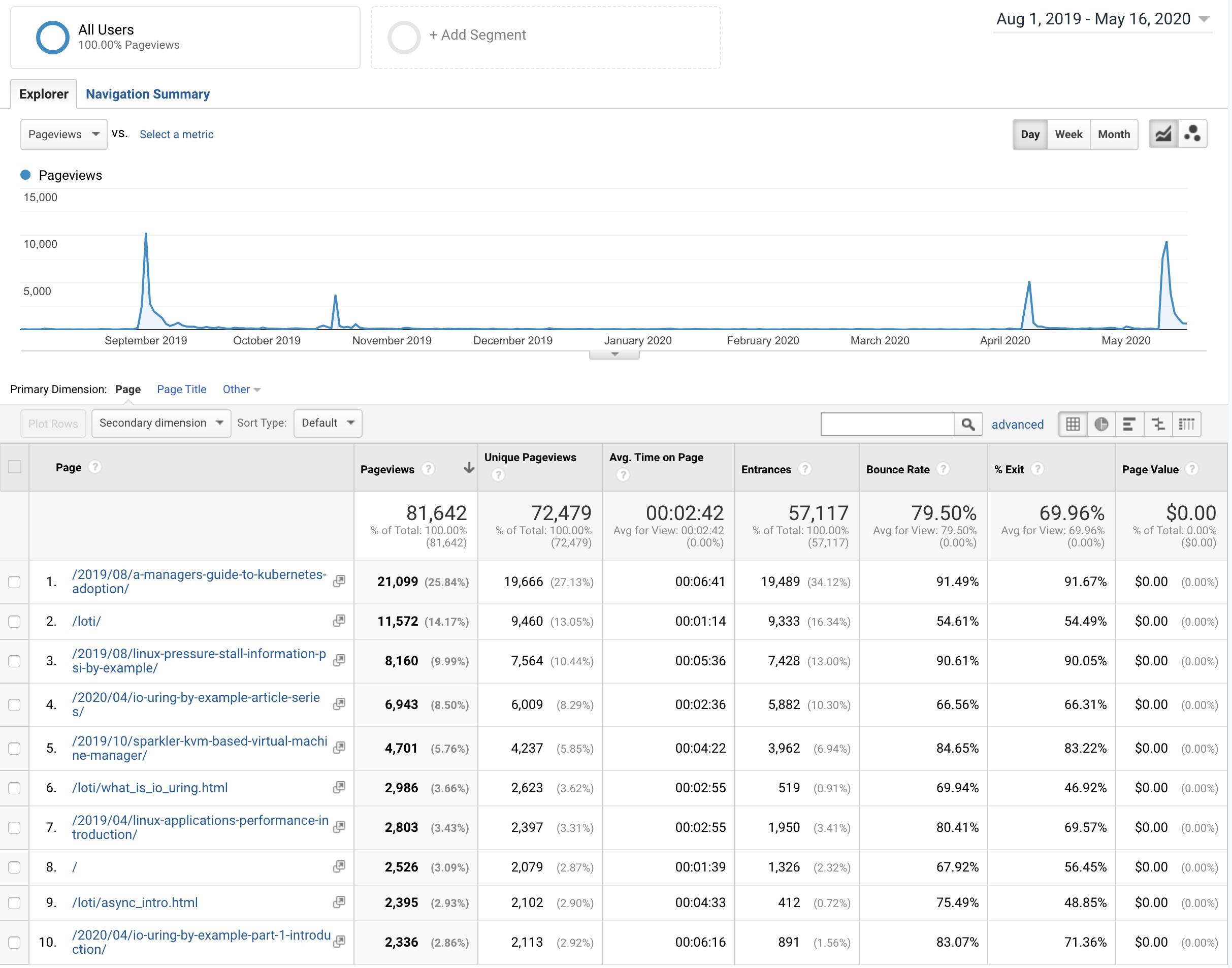
For reference, there were about 30-40 page views per day in March when I did not post anything to the blog.
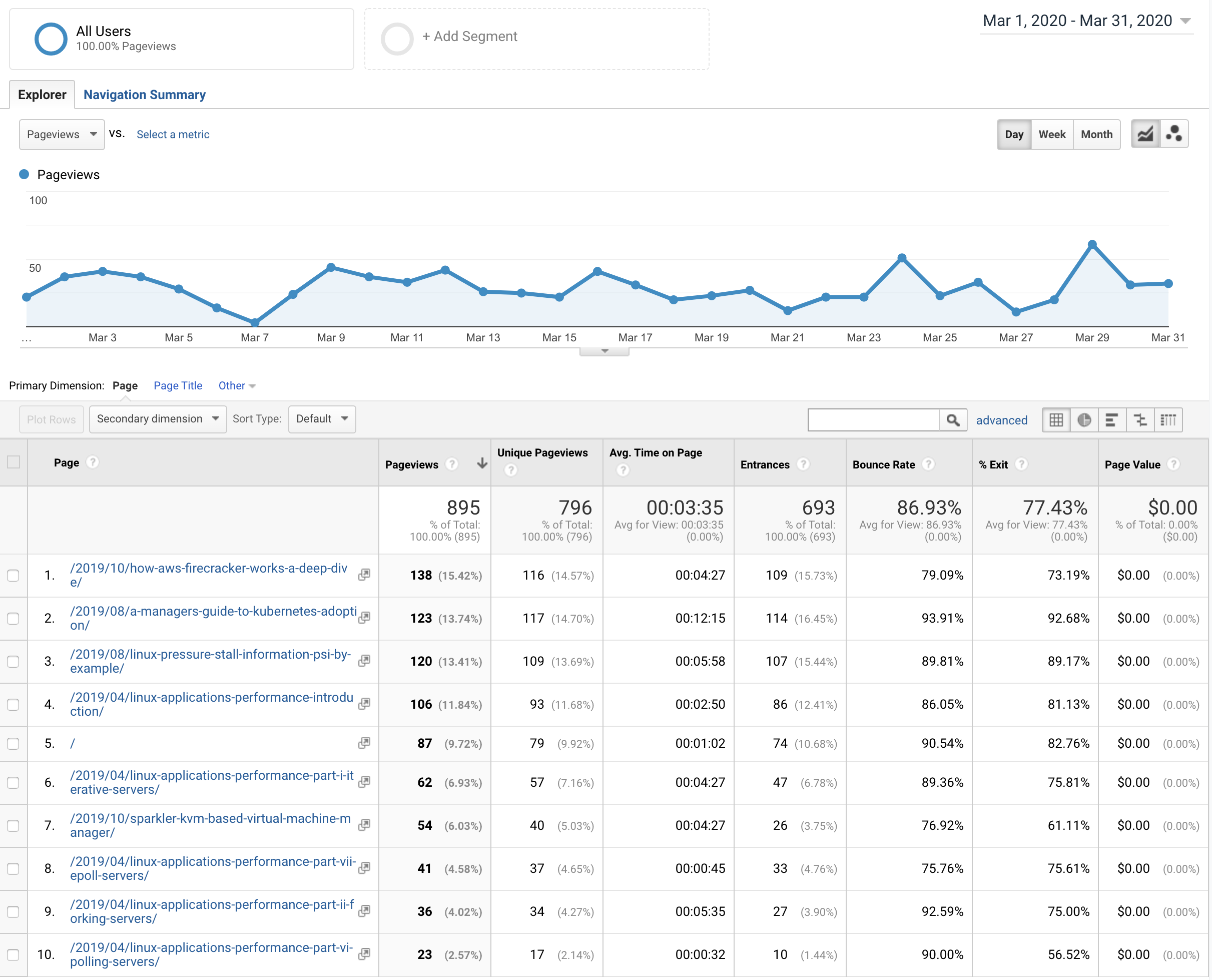
Finishing at #7
A Manager’s Guide to Kubernetes Adoption finished at #7 for August 31st, 2019. This is how traffic for it looked like for 7 days since it was posted on Hacker News.
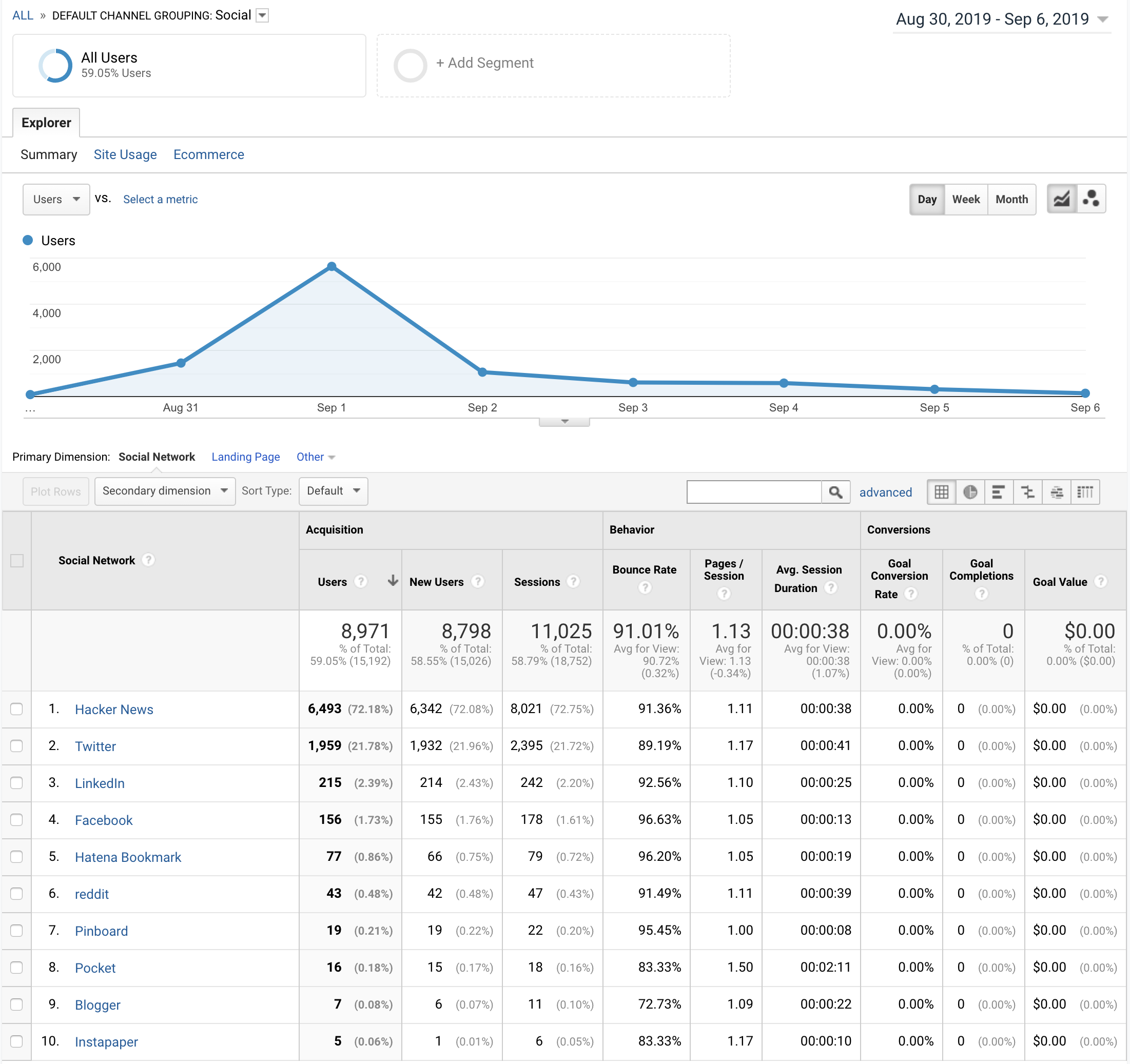
Some notes
- 72% of the users came from Hacker News, which is 6,493 unique users of the total 8,971 users seen during the period.
- There were 11,025 sessions by these users of which 8,021 are attributable to Hacker News.
- With 1.11 pages viewed per session that is 8,903 page views.
As mentioned before, all other traffic during this period is indirectly attributable to Hacker News as well since I did not post this link anywhere else.
Finishing at #21
io_uring by Example finished at #21 for April 6th, 2020. This is how traffic for it looked like for 7 days since it was posted on Hacker News.
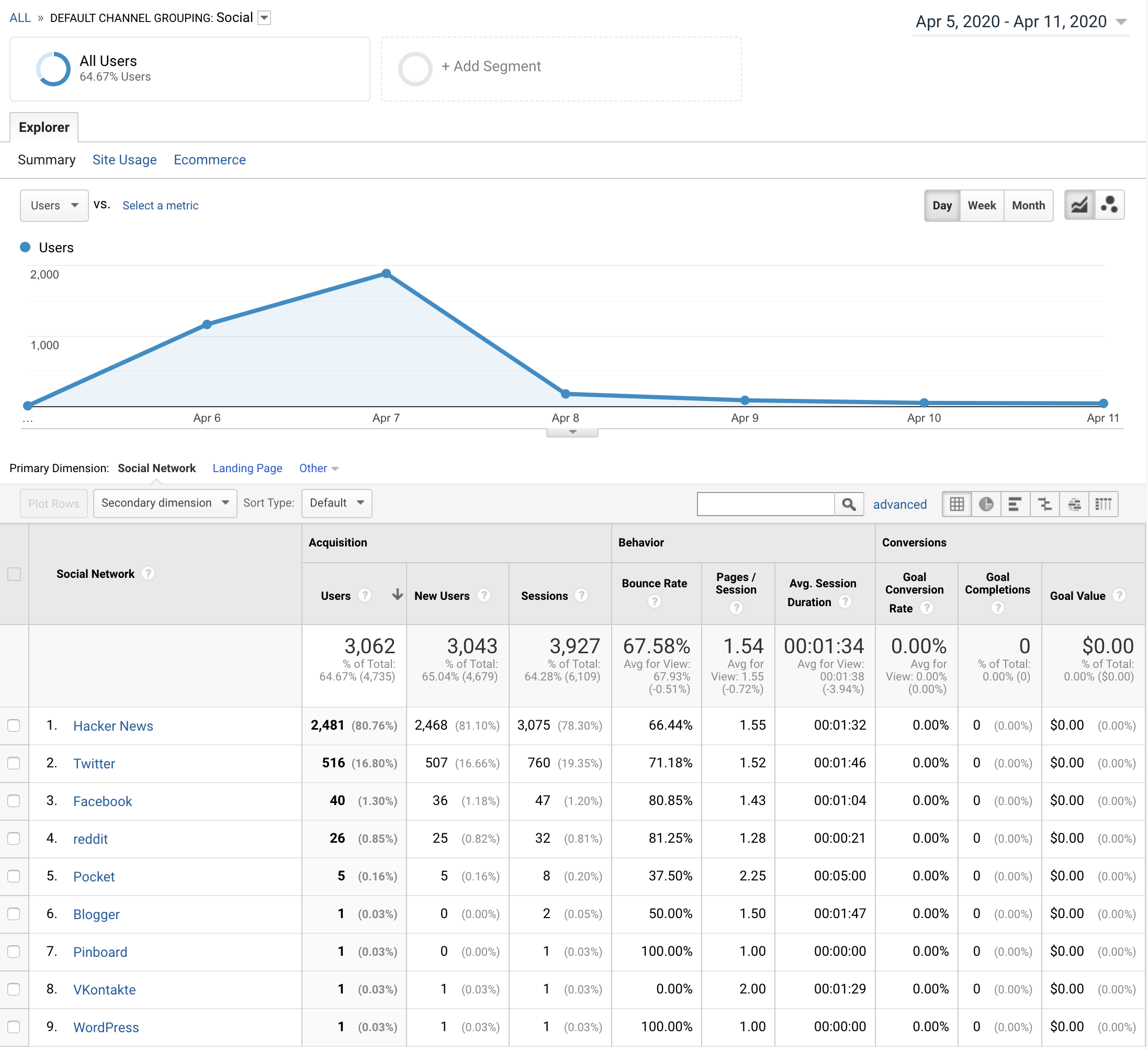
Some notes
- 81% of the users came from Hacker News, which is 2,481 unique users of the total 3,062 users seen during the period.
- There were 3,927 sessions by these users of which 3,075 are attributable to Hacker News.
- With 1.54 pages viewed per session that is 4,735 page views.
As mentioned before, all other traffic during this period is indirectly attributable to Hacker News as well since I did not post this link anywhere else.
Finishing at #8
Lord of the io_uring finished at #8 for May 10th, 2020. This is how traffic for it looked like for 7 days since it was posted on Hacker News.
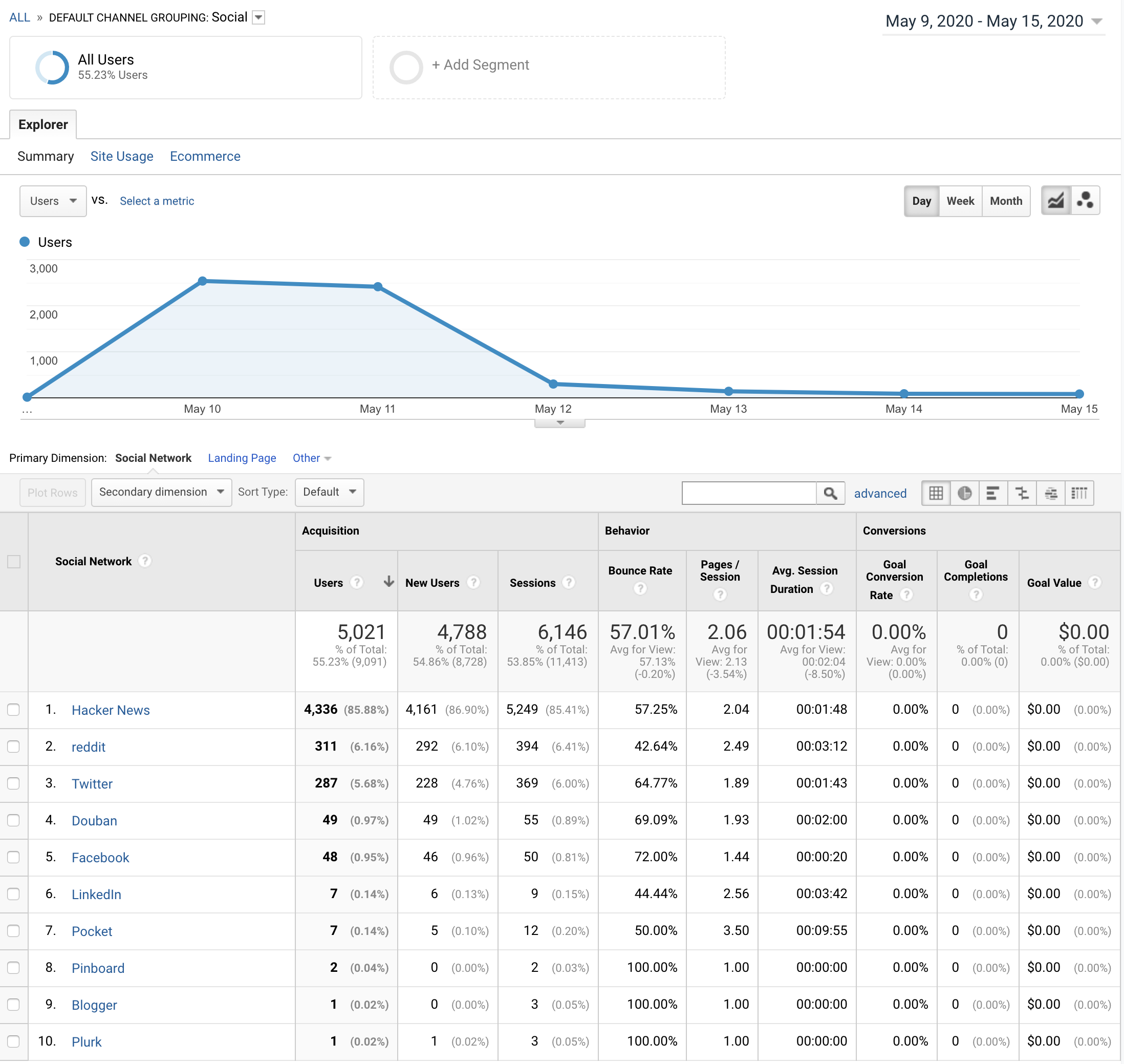
Some notes
- 85.8% of the users came from Hacker News, which is 4,336 unique users of the total 5,021 users seen during the period.
- There were 6,146 sessions by these users of which 5,249 are attributable to Hacker News.
- With 2.06 pages viewed per session that is 10,812 page views.
As mentioned before, all other traffic during this period is indirectly attributable to Hacker News as well since I did not post this link anywhere else.
Conclusion
Getting featured on Hacker News is great not only for the traffic, but also for insights from discussions that happen there. It is a great way to build an audience. Hacker News daily summaries are picked up by many different services. Ending up on the top there can result in further traffic. I don’t quite understand how daily summaries are sorted, since the “points” don’t seem to be the only metric that are taken into consideration.
If you like what you see, you can follow me on Twitter where I post tech-related content mostly focusing on Linux, performance, scalability and cloud technologies.
You must be logged in to post a comment.